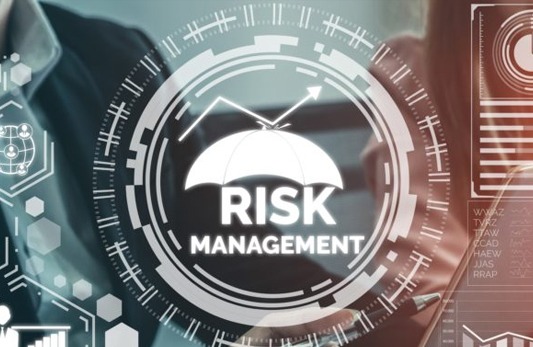

Risks affecting organizations can have consequences in terms of economic performance and professional reputation, as well as environmental, safety and societal outcomes. Therefore, managing risk effectively helps organizations to perform well in an environment full of uncertainty.
We offer training for both medical and aerospace risk management. ISO 14971 is the Medical Device Standard and ISO 31000 works with AS9100 and ISO 9001.
ISO 31000:2009, Risk management – Principles and guidelines, provides principles, framework and a process for managing risk. It can be used by any organization regardless of its size, activity or sector. Using ISO 31000 can help organizations increase the likelihood of achieving objectives, improve the identification of opportunities and threats and effectively allocate and use resources for risk treatment.
In this course, you’ll learn how to use a simple 8-step approach to correcting and preventing problems or nonconformities that exist anywhere in your organization. It can help to satisfy quality management system requirements for planning and establishing a process for corrective action.
Learn the process for completing a formal corrective action request. You’ll learn how to describe a problem, conduct causal analysis and what information is needed in order to ensure a corrective action is complete and effective.
This corrective action training is a great course for anyone learning to deal with corrective actions for the first time or anyone who needs a refresher to calibrate your knowledge and build confidence in your abilities.
Any employees that will conduct a corrective action or participate as a team member, as well as any individual who would like to gain an in depth understanding of the 8-step approach for CAPA’s.
Application of Closed-Loop Root Cause & Corrective/Preventive Action Tools
Days: 2
7:30 AM- 4:30 PM MST
This class teaches participants the Aerospace Risk Requirements (per AS9100, 9110, and 9120) as well as the specific requirements for Operation Risk as defined in AS13004 PFMEA and Control Plans. The course follows a well-organized, systematic approach to Identify, Assess, and Mitigate Risks that impact Aerospace organizations and the risks to their customers and stakeholders. While Risk Management is a basic requirement of ISO 9001, the Aerospace standards incorporate all of these requirements and add further requirements to make aerospace products and services safe and effective throughout the Supply Chain. Further, with reduced risks inherent in the Design and Manufacture of aerospace articles, the costs associated with their manufacture should be reduced.
Who Should Attend
|
 |

Come learn the FDA 21 CFR and ISO 13485 requirements for a regulatory-compliant CAPA system and records. You will leave this training knowing how to perform effective root cause investigations that address, resolve, and prevent the issue(s) from recurring. This same CAPA methodology can be used to address Regulatory audit findings throughout the world.
This course teaches:
✔ The regulatory requirements for pharmaceutical and medical device CAPA:
✔ How to perform effective fast-paced root cause analysis and complaint investigations– no more “best-guesses”
✔ How to document complaint investigations and maintain records to demonstrate compliance
✔ Root cause investigation methods, such as:
|
 |
✔ Other helpful pharma & medical device CAPA Tools including:
Day 1
Day 2
|
|
This class will teach participants to turn Risk Assessment into a well-organized systematic approach that targets and then reduces risk to the organization, customers and stakeholders. While Risk Management is a requirement for Medical Device Manufacturers, these same techniques learned in this ISO 14971 training can be used regardless of the products or services offered by your organization.
Who Should Attend?
|
 |
- Risk terminology and theory from ISO 14971 and ISO 13485
- History of risk management and relationship with Corrective and Preventive Actions
- Requirements of ISO 14971
- Design of framework for managing risk
- 4.3.2 Establishing risk management policy
- Integration into organizational processes
- Establishing internal communication and reporting mechanisms
- Establishing external communication and reporting mechanisms
- Implementing risk management
- Implementing the framework for managing risk & risk management process
- Continual improvement of the framework
- Communication and consultation
- Establishing the internal and external context
- Establishing the context of the risk management process
- Defining risk criteria
- Risk assessment
- Risk identification
- Risk analysis
- Risk evaluation
- Risk treatment
- Selection of risk treatment options
- Preparing and implementing risk treatment plans
- Monitoring and review
- Recording the risk management process
- Exercises B.1 – B.6 internal & external framework, risk treatment, risk monitoring, risk policy, risk analysis
- Guidelines from ISO 14971
- Techniques – Risk Management
- Selection of risk assessment techniques
- Selection of techniques
- Availability of Resources
- The Nature and Degree of Uncertainty
- Complexity of risk
- Application of risk assessment during life cycle phases
- Types of risk assessment techniques
- Flow charts and process mapping
- Brainstorming
- Risk Checklists
- Delphi Method
- Process FMEA
- Design FMEA
- Fault Tree Analysis (Event Tree Analysis)
- HAZOP & HACCP
- Cause & Effect with 5-Whys & 7-M
- Preliminary hazard analysis
- Risk Ranking and Filtering
- Case Studies with application
- Organization’s Risk Procedures and Tools
- Case Studies from Organization’s Risk Analysis, Treatment and Monitoring
- Risk Applications in the Aerospace organization
- Internal Audit
- Training
- CAPA System
- Supplier Selection & Control
- Outsourcing – Special Processes
- Facilities and Equipment
- Design & Development
- Production and Process Controls
- Process Validation and Re-Validation
- Servicing
- Design FMEA Case Study
- Various Risk Case Studies
- Organization’s Case Studies
- Statistical Methods
- Test
Days: 2
Time: 7:30 AM- 4:30 PM MST
Audience: Beginner to Advanced
Human Factors is a term that appears in the latest versions of several ISO standards, including:
This Human Factors online training helps you to understand human factors in the context of each standard. You will learn how to apply the concept of human factors to your management system and address the standard requirements. You will also receive practical tools, proven methodologies, and helpful tips to make the job easier for you.
As with all of Axeon’s courses, this is a practical, how-to that is not bogged down in academic discussions. We use case studies, practice exercises, and learning activities to keep the training activities and build competence.
| · Quality managers | Also: |
| · Management representatives | · Quality consultants |
| · Quality engineers | · Those involved in performing corrective actions |
| · Safety managers | · Those involved in medical device risk management |
| · Top management | · Preparation Of Checklists From Process Analysis |
| · Regulatory affairs specialists | |
Prerequisites
None. Our students range from seasoned quality professionals to novices. Our goal is to meet everyone at their current level of competence and increase it.
Intro to Human Factors
Review ISO Standard Requirements: 9001, AS9100D, 14971, 45001
Definitions of Human Factors by Standard
Human Factors and Root Cause Analysis
Corrective Action and Human Factors
The 13 Most Common Human Factors
Activity: Applying Human Factors in Corrective Action
Human Factors and Poka-Yoke
Definition & History of Poka-Yoke
Methodology for Poka-Yoke
Activity: Applying Poka-Yoke to Human Factors
Human Factors and Health & Safety
Definition of Human Factors in Health & Safety
Human Factors and Ergonomics
How Human Factors influence Safety at Work
Activity: Applying Human Factors to Safety
Human Factors and Medical Devices
Methodology for Considering Human Factors in Risk Assessment
Device Design According to Human Factors Consideration
Human Factors in Post-Market Surveillance
Final Test
Days: 1
Time: 7:30 AM-4:30 PM MST
Audience: Top management
A QMS (Quality Management System) is NOT a cost of doing business. It’s an investment. And top management should expect to get a financial return on that investment. However, the Return On Investment (ROI) they receive will be greatly impacted by the level of leadership and commitment they provide concerning the management system.
The newest versions of most ISO management standards have amplified the requirements for top management, in accordance with ISO 9001:2015. In this highly interactive course, senior managers will learn how to fulfill their new responsibilities, take accountability, and maximize the ROI they get from their management systems.
This class will help to show the true value of your quality management system and how much it really adds to your bottom line. It will also help your company to increase the ROI of your QMS.
If you want to improve your company’s bottom line or show your boss how much your QMS is already contributing to profits then this class is for you.
Benefits of a Quality Management System
Overview of Quality Principles
How to Maximize the ROI from your QMS
The Five Biggest Mistakes Executives Make with Quality Management
Final Test